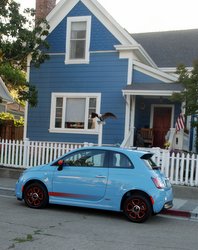Tips to Combat Electric Car Range Anxiety
Electric vehicles are greatly appreciated for providing an alternative to expensive gas and diesel cars, yet the technology is far from perfect. One thing that bothers many drivers is the range anxiety. Here are some tips to get better EV mileage.
A typical EV cannot go the same distance as a combustion-powered vehicle (on a single “fill up”) and, combined with a possible scarcity of charge points in your area, this is one of the leading factors preventing people from adopting the technology.
Yet, it is still possible to improve your mileage. Hypermiling has long been used in traditional cars and many of these factors work with EVs.
Basic Maintenance

Overall, maintenance is easy for an EV, since there isn’t a combustion engine to worry about. That said, the rest of the areas are, for the most part, fundamentally the same.
For the best example, simply look at your tires. Their condition determines how much energy is converted into movement, or wasted due to inefficiencies. It doesn’t take much to keep the tire pressure optimal, but it ensures the battery isn’t wasting energy.
The same can also be said for ensuring you don’t overload your car or add external fixtures (like roof racks) that create air resistance. It’s easy to do, but greatly helps in the long run.
Regenerative Braking
One of the biggest ways to save energy is to regain it via regenerative brakes (a common feature in EVs). Here, you can coast with the car, using gentle braking and accelerating to maintain your speed. It is regular but soft touches of the pedal that will make use of regenerative braking, saving a little power as you go.
This also works well when going down hills. Once you get an intuitive understanding of your braking system, you maintain your speed with gentle, but firm, use of the braking. This makes use of natural momentum, easing the requirements on the engine, and building up regenerative power along the way.
The Best Speed

With combustion engines, many people agree that a speed close to 55 mph is often the most ideal. Of course, this does not apply to wholly electric engines.
Right now, there is not enough data to determine what the best speed is and it will vary from car to car. Some online research, as well as your own observations, however, might highlight what speed range is the most efficient. While this might not always be practical, it’s a good fact to know when you don’t mind arriving at your destination a little late.
Route Planning
Many EVs come with sat nav and other features as standard but, as many drivers know, the most direct route is not necessarily the best one as far as energy preservation is concerned. Every time you have to bring your car to a halt, you waste energy. Of course, regenerative braking ensures this isn’t as bad in EVs as it is in combustion-based vehicles.
Likewise, you can also consider your speed, as mentioned above. You might find taking a route that is better for your desired speed is more efficient, even if a little longer, than the stop-and-start nature of driving straight through town.
As you can see, there are a few ways to help get better mileage from an EV. While the changes won’t be drastic, they can make a noticeable improvement and help put any concerns about range anxiety to rest.
